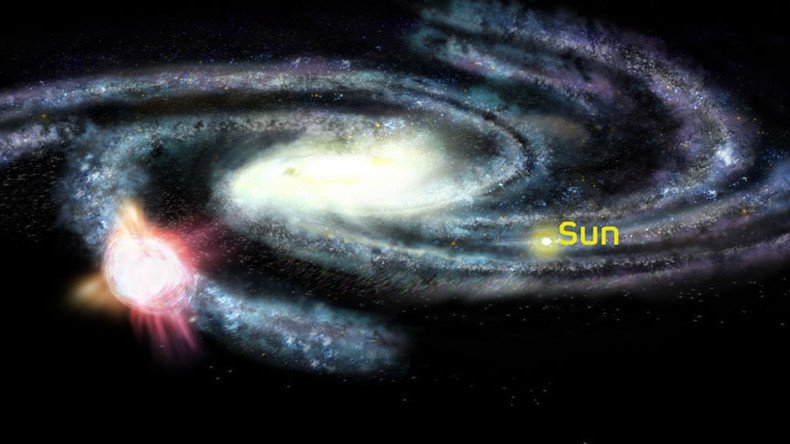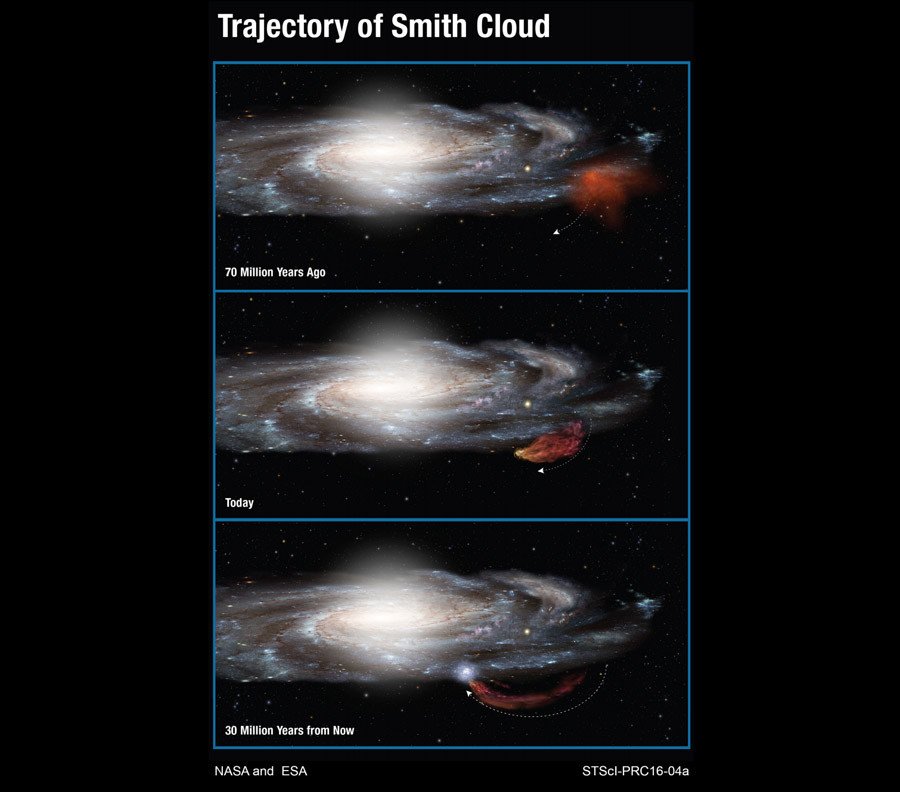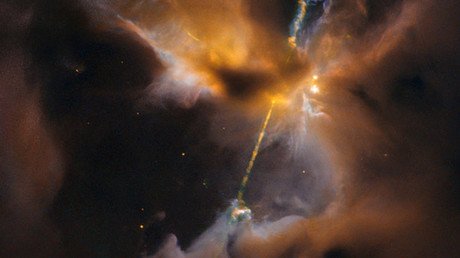Monstrous gas cloud to smash into Milky Way Galaxy with ‘spectacular burst’

A monstrous cloud is now heading to our Milky Way galaxy with enormous speed and is ready to collide with it, scientists said, adding that when it plows into our galaxy, the reaction will trigger star formation and provide gas for 2 million new stars.
The Smith Cloud, a high-velocity cloud of hydrogen gas “is plummeting toward our galaxy at nearly 700,000 miles per hour,” said the team of astronomers who have been working with the Hubble Space Telescope.
The cloud, supposedly coming from the outer regions of the galactic disk where it originated about 70 million years ago, was discovered in the 1960s by doctoral astronomy student Gail Smith.
The “apocalypse” it brings is not going to happen tomorrow – the scientists found out that the cloud is expected to plow into the Milky Way's disk in some 30 million years.
When the collision takes place, it “will ignite a spectacular burst of star formation, perhaps providing enough gas to make 2 million suns,” the astronomers say.
"The cloud is an example of how the galaxy is changing with time," Andrew Fox, of the Space Telescope Science Institute in Baltimore, Maryland, said. "It's telling us that the Milky Way is a bubbling, very active place where gas can be thrown out of one part of the disk and then return back down into another."
And the cloud is really monstrous even up to space standards – the comet-shaped region of gas in the cloud is about 11,000 light-years long and 2,500 light-years across.

“If the cloud could be seen in visible light, it would span the sky with an apparent diameter 30 times greater than the size of the full moon,” astronomers say.
While the cloud is heading to our galaxy with monstrous speed (and probably monstrous intentions), the scientists try to unravel the mystery of the phenomenon. The researchers wonder how the cloud got to “where it is now” or what exactly catapulted it out of the Milky way.
READ MORE: NASA discovers ‘smallest supermassive’ black hole ever
“Could it be a region of dark matter — an invisible form of matter — that passed through the disk and captured Milky Way gas? The answers may be found in future research,” the scientists ask.













